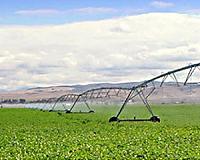 |
Tokyo (AFP) March 24, 2011 Countries across the world have shunned Japanese food imports as radioactive steam leaked from a disaster-struck nuclear plant, straining nerves in Tokyo. The grim toll of dead and missing from Japan's monster earthquake and tsunami on March 11 topped 26,000. Hundreds of thousands remained huddled in evacuation shelters and fears grew in Tokyo over water safety. The damage to the Fukushima nuclear plant from the tectonic calamity and a series of explosions has stoked global anxiety. The United States and Hong Kong have already restricted Japanese food, and France wants the European Union to do the same. Russia ordered a halt to food imports from four prefectures -- Fukushima, Gunma, Ibaraki and Tochigi -- near the stricken plant some 250 kilometres (155 miles) northeast of Tokyo. Moscow also quarantined a Panama-flagged cargo ship that had passed near the plant and put its 19 crew under medical supervision after detecting radiation levels three times the norm in the engine room. Australia banned produce from the area, including seaweed and seafood, milk, dairy products, fresh fruit and vegetables. It said, however, that Japanese food already on store shelves was safe, as it had shipped before the quake, and that "the risk of Australian consumers being exposed to radionuclides in food imported from Japan is negligible". Canada implemented enhanced import controls on products from the four prefectures. Singapore suspended imports of milk products and other foodstuffs from the same four prefectures, as well as all food products from two more -- Chiba and Ehime. The city-state's move came after officials found "radioactive contaminants" in four samples of vegetables from Japan, though the authorities stressed the radiation levels in the produce were still very low. The Philippines banned Japanese chocolate imports, and Indonesia asked that Japan certify its exported processed foods as radiation-free. "Food safety issues are an additional dimension of the emergency," said three UN agencies in a joint statement issued in Geneva, pledging they were "committed to mobilising their knowledge and expertise" to help Japan. Japan was taking the right actions, said the International Atomic Energy Agency, World Health Organization, and Food and Agriculture Organization. In greater Tokyo, an urban sprawl of more than 30 million people, strong aftershocks served as uncomfortable reminders that Japan's capital itself is believed to be decades overdue for a mega-quake. The anxiety was compounded by the Tokyo government's revelation Wednesday that radioactive iodine in the drinking water was more than twice the level deemed safe for infants, although it remained within safe adult limits. The news triggered a run on bottled water in shops and the city's ubiquitous vending machines, while the Tokyo government started to give families three 550-millilitre (18.5-ounce) bottles of water per infant. A measurement on Thursday was in the safe zone for infants again, officials said, but this was not enough to calm all parents of young children and many bought up what bottled water they could. Authorities in Chiba, Tochigi urged parents not to give infants tap water after finding levels of radioactive iodine breached the safe limit for babies. Japan's government has also halted shipments of untreated milk and vegetables from Fukushima and three adjoining prefectures, and stepped up radiation monitoring at another six, covering an area that borders Tokyo. The health ministry has detected 82,000 becquerels of radioactive caesium -- 164 times the safe limit -- in the green vegetable kukitachina, and elevated levels in another 10 vegetables, including cabbage and turnips. At the source of the radiation -- the Fukushima plant located on the Pacific coast -- white smoke was seen wafting from four of the six reactors. Fire engines again aimed high-pressure water jets at the number three reactor, a day after a plume of dark smoke there forced workers to evacuate, in a bid to avert a full meltdown that would release greater radiation. Highlighting the risks taken by the emergency crew, three workers were exposed to high radiation -- at least 170 millisieverts. Two of them were sent to hospital after they stepped into a puddle of water that reached the skin on their legs despite their radiation suits. Engineers have now linked up an external electricity supply to all six reactors and are testing system components and equipment in an effort to restart the tsunami-hit cooling systems and stabilise the reactors. On Thursday, they partially restored power to the control room at reactor number one. The grim statistics from Japan's worst post-war disaster kept on rising, with 9,811 now confirmed dead and 17,541 listed as missing by national police. Scientists at the Port and Airport Research Institute meanwhile found that the tsunami that swallowed entire towns was even bigger than first thought. In devastated Ofunato, Iwate prefecture, it topped 23 metres (76 feet). burs-pdw/boc
Share This Article With Planet Earth
Related Links Farming Today - Suppliers and Technology
 Two Rivers Water Company Signs Agreement On 1000 Acres Of Farmland
Two Rivers Water Company Signs Agreement On 1000 Acres Of FarmlandDenver CO (SPX) Mar 24, 2011 Two Rivers Water Company has announced that the Company has signed agreements to acquire an additional 1,000 acres of land adjacent to irrigated farmland it currently owns in Pueblo County, Colorado. In 2009, Two Rivers began implementing a plan to acquire and develop as much as 25,000 acres of irrigated farmland alongside a system of ditches and canals it owns in Pueblo County, Colorado ... read more |
|
| The content herein, unless otherwise known to be public domain, are Copyright 1995-2010 - SpaceDaily. AFP and UPI Wire Stories are copyright Agence France-Presse and United Press International. ESA Portal Reports are copyright European Space Agency. All NASA sourced material is public domain. Additional copyrights may apply in whole or part to other bona fide parties. Advertising does not imply endorsement,agreement or approval of any opinions, statements or information provided by SpaceDaily on any Web page published or hosted by SpaceDaily. Privacy Statement |